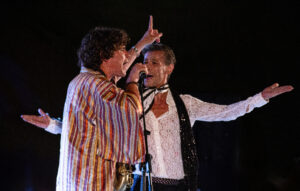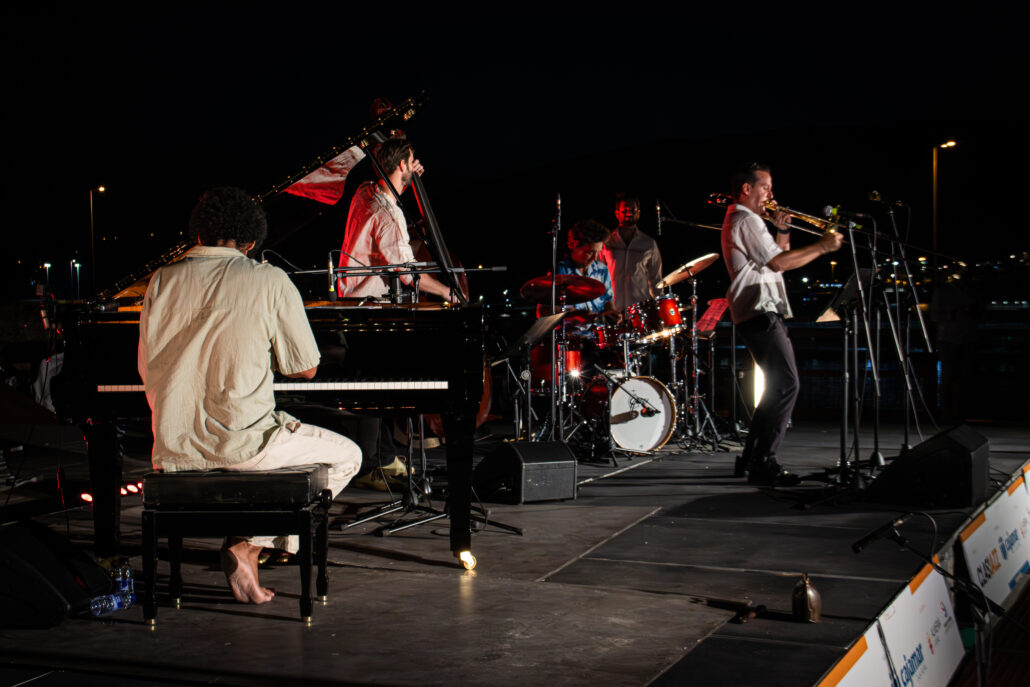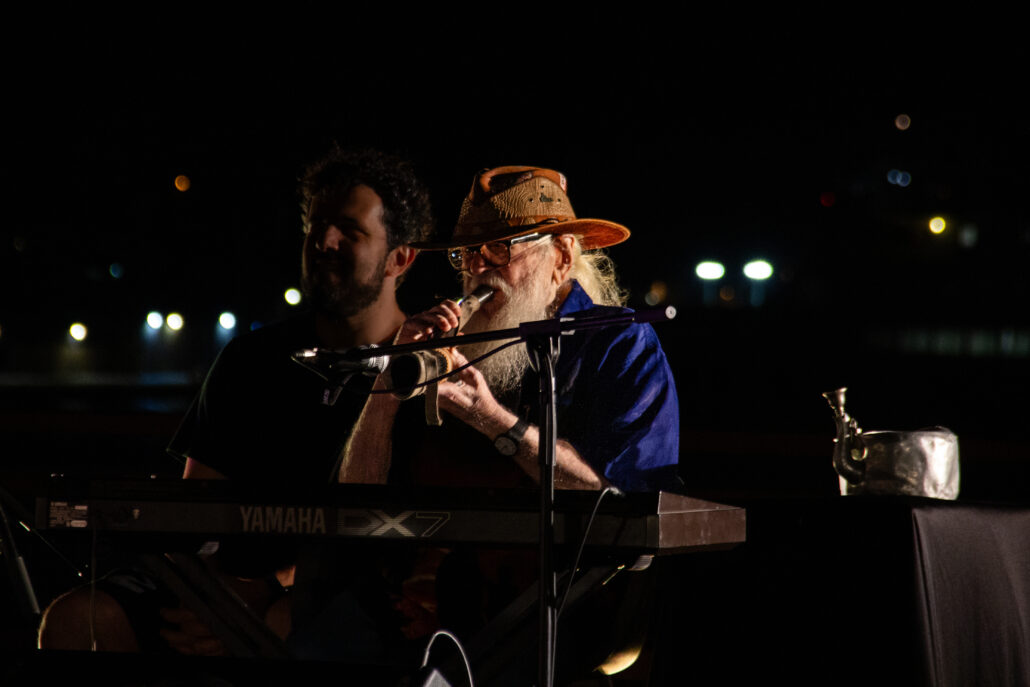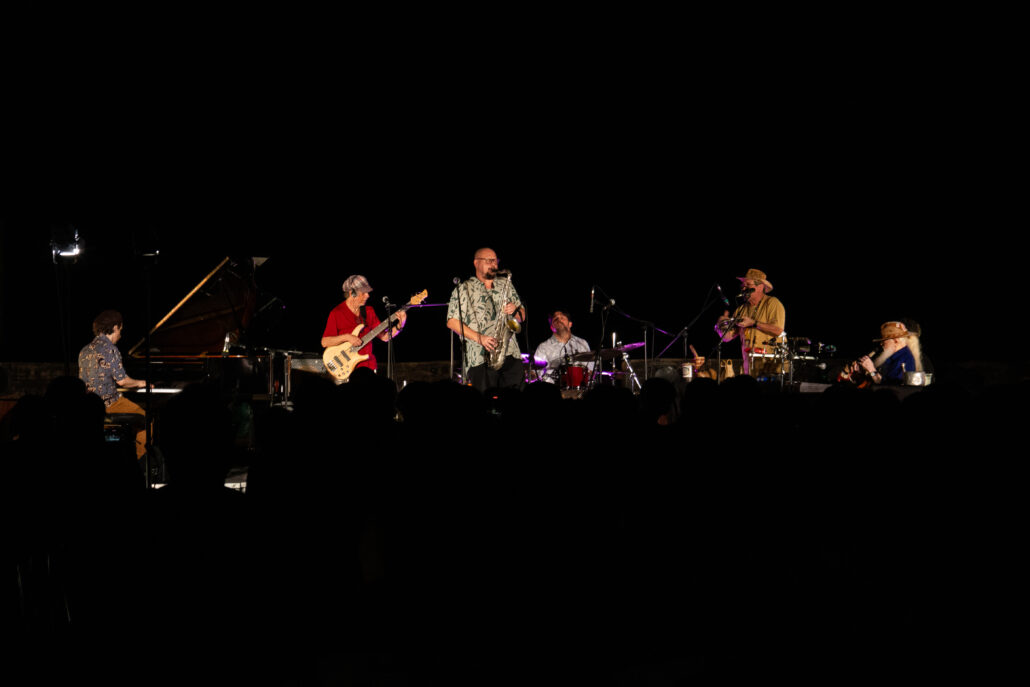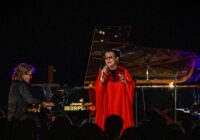Naranjazz Festival-12-14/9/2025
In Gádor, a village with just three thousand inhabitants, only twenty minutes from the city of Almería, from September 12th to 14th, the Naranjazz festival takes place once again. Although I was only able to attend one and a half of the three days, the experience was enough for me to feel the full magic and pulse of the festival. A three-day event mainly of jazz concerts by various ensembles, but also featuring a variety of other musical genres. Both renowned and emerging artists join forces to take the audience on a musical journey. Every evening, as soon as the concerts begin, the area next to the large orange-shaped arch — made of glowing orange lights — fills with people, watching with excitement while enjoying their drinks and a selection of tapas. Both the small and large stage, almost facing each other, become filled with jazz melodies.
At the concert by Claijazz Collective with Jose Diego Sarabia, the harmonic solos of the wind instruments stand out, as do their dance-like movements. Pieces such as El día de la marmota and El sonido de la caracola lend a special tone to the atmosphere with their repetitive yet distinctive melodies. At many points, all the instruments — from the piano, accompanied by pizzicato double bass, to the percussion and the singer’s whistling, reminiscent of the sound of the waves at night — come together to create the feeling that the listener is standing by the sea, holding a seashell to their ear, as the melodies shift from sweet piano to mysterious forte and back again.
Moving on to Antonio Lizana’s quintet, the audience is thrilled by the flamenco concert, with the singer singing while playing the saxophone during the breaks, while at the same time a dancer performs flamenco, perfectly synchronizing rhythmic claps and footwork. In some pieces, the saxophonist is so absorbed in his music that his body moves up and down as he plays. The songs evoke traditional village music, while the singer’s voice, with its constant modulations, recalls amanés (traditional lament-like songs). The piano, at times sweet and nostalgic, blends with the saxophone in a harmony that evokes the warmth of home. Finally, in some pieces, the singers’ voices merge with those of the audience, drawing them into the overall harmony.
In the Tumbando a Monk ensemble, the pieces are mostly in Latin rhythms, with saxophone, bass, piano and drums combining with the sounds of bongos, maracas, and flute. Finally, in the Fantasy Beat Collective, the singer, with her energy and cheerful spirit, manages to get the audience to sing and dance along with the band — from Spanish songs to English ones — until dawn.
On Saturday morning, quite a crowd gathers in the square. Mostly families with small children running happily to the rhythm of the music, but also people of all ages. In front of the stage, stalls with handmade toys and jewelry glitter in the sun, drawing people closer for a better look. The groups range from guitar-and-voice duos, who encourage the audience to sing along, to young students taking their first steps in music (Combos escuela de música de Gádor, Escuela de Clasijazz) and experienced musicians who get the crowd moving with the sounds of guitars, ukuleles and drums (ELCAMM). And of course, the group with the cajón (Cajonada en familia), where children and adults played Latin rhythms accompanied by guitar, adding to the overall shared joy.
It was certainly a unique experience for both young and old, who had the chance to attend the festival’s morning and evening events, gaining memories they will cherish and listening to music they might never have had the chance to hear live. Initiatives like this keep alive the hope of promoting jazz music in more and more remote places.
Review by Zoi Michailidou
Photos by Emilia Studnicka



